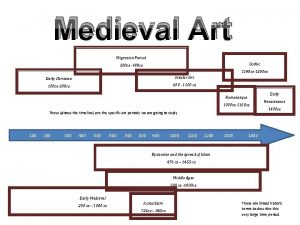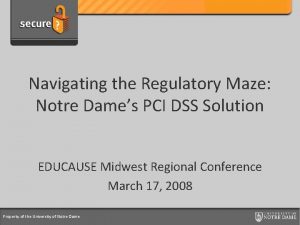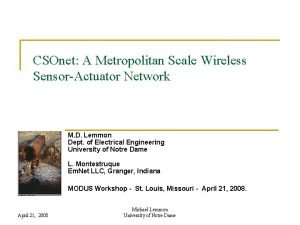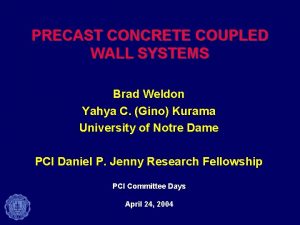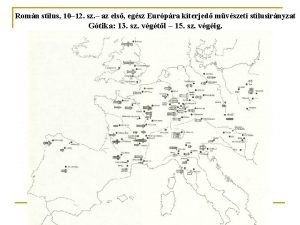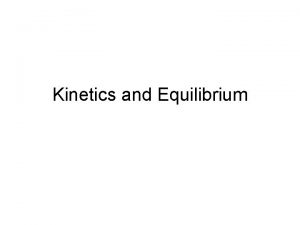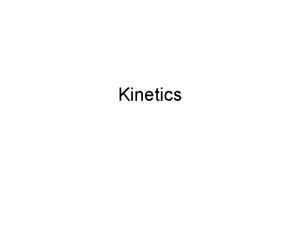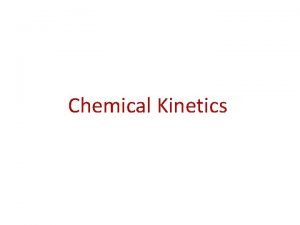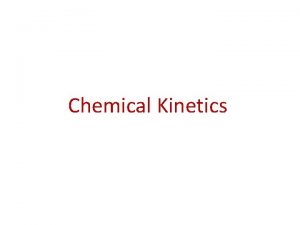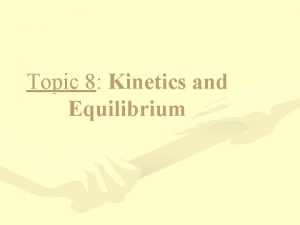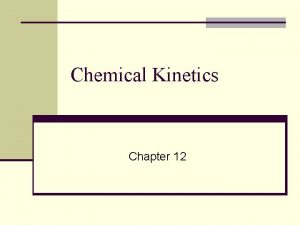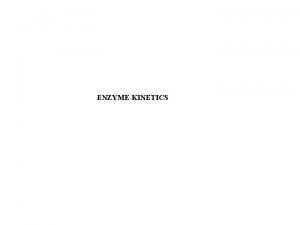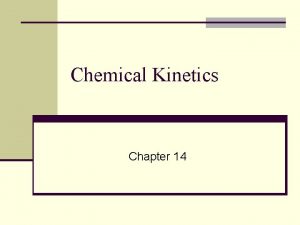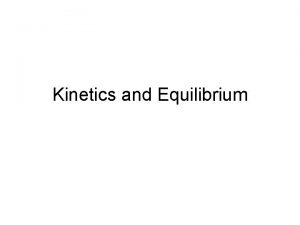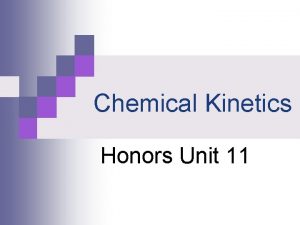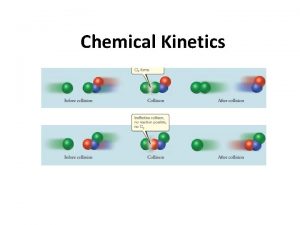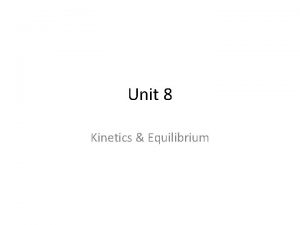An exercise in using the Notre Dame Kinetics





























- Slides: 29

An exercise in using the Notre Dame Kinetics Database in fitting transient absorption data Dave Bartels Tim Marin Irek Janik $$$ DOE – BES Chemical Sciences, NE/NERI

Electron Radiolysis

Reaction Set for Radiolysis of Water

Water Properties

Apparatus for Supercritical Water Radiolysis Studies

Reaction of OH Radical with H 2 Why should this “simple” reaction slow down at higher temperature?


OH + CO 3 - reaction? ? ?

600 nm absorption of carbonate anion radical at 250 C dose

OH + CO 3 - reaction ? ? ? HCO 3 - CO 2 + OH- ? ? ?

Search on carbonate radical reactions



10 x higher recombination Rate constant? ? ? CO 3 - + H 2 O 2 ? ? ?




Relatively slow….



Product? ? Assume 2 CO 2 + H 2 O 2 + 2 OH-

mechanism • • • • • • • • Function Carb. Radiolysis(fit, tt, yw, dydt) //OH + HCO 3 - --> CO 3*- + H 2 O 0 //OH + OH --> H 2 O 2 1 //OH + CO 3*-->HOOCO 2 - --> CO 2 + HO 22 //CO 3*- + H 2 O 2/HO 2 O 2 - + CO 3= 3 //CO 3*- + CO 3*- --> 4 (too slow to matter much) //H + OH- -> OH (via N 2 O) 5 //H + OH --> H 2 O 6 //H + CO 3*- --> HCO 37 assume same rate as H + OH Variable tt // time value at which to calculate derivatives Wave yw, fit // yw[0]-yw[3] containing concentrations of OH(0), CO 3*-(1), H 202(2), H(3) // fit reflect rate constant of reactions 0 -4 Wave dydt // wave to receive d. A/dt, d. B/dt etc. (output) Wave bicarb, hydrox, k_OH, k_hydrox variable rxn 0, rxn 1, rxn 2, rxn 3, rxn 4, rxn 5, rxn 6, rxn 7, runnum=fit[6] rxn 0 = fit[0]*(bicarb[runnum]+50*carb[runnum])*yw[0] //first order scavenging(rate*bicarb conc) rxn 1 = fit[1]*yw[0] //second order reaction of OH--k, not 2 k rxn 2 =fit[2]*yw[1]*yw[0] // OH reacts with carbonate rxn 3=fit[3]*yw[1]*yw[2] //carbonate reacts with peroxide, producing superoxide rxn 4=fit[4]*yw[1] // carbonate bimolecular reaction, produces peroxide rxn 5=k_hydrox[runnum]*yw[3] // H with hydroxide rxn 6=k_OH[runnum]*yw[3]*yw[0] // H with OH rxn 7= k_OH[runnum]*yw[3]*yw[1] // H with carbonate dydt[0] = -rxn 0 -2* rxn 1 -rxn 2 - rxn 6 + rxn 5 //OH dydt[1] = rxn 0 - rxn 2 - 2*rxn 3 - 2*rxn 4 -rxn 7 //CO 3 -* (rxn 3 removes two carbonate via superoxide) dydt[2] = rxn 1 + rxn 2 - rxn 3+ rxn 4//H 2 O 2/HO 2 dydt[3] = -rxn 5 -rxn 6 -rxn 7 // H atom End

4 x Assuming several shots were averaged, peroxide could build up…

…Yes

OH + bicarbonate ion

OH + carbonate ion



 What is the purpose of a flying buttress?
What is the purpose of a flying buttress? Notre dame opt
Notre dame opt Nous te saluons ô toi notre dame
Nous te saluons ô toi notre dame Notre dame risk management
Notre dame risk management Notre dame de sion istanbul
Notre dame de sion istanbul Vpn notre dame
Vpn notre dame How to upload photos on google
How to upload photos on google Notre dame organum
Notre dame organum Michael lemmon notre dame
Michael lemmon notre dame Inside nd gmail
Inside nd gmail Nd army rotc
Nd army rotc Sanctuaire plateau de son ange
Sanctuaire plateau de son ange Notre dame rotc scholarship
Notre dame rotc scholarship Ndb belmont
Ndb belmont Brad weldon notre dame
Brad weldon notre dame College notre dame des soeurs antonines
College notre dame des soeurs antonines Cn tower golden ratio
Cn tower golden ratio University of notre dame map
University of notre dame map Notre dame leeds moodle
Notre dame leeds moodle Cathdrale
Cathdrale Notre dame msm
Notre dame msm Collège notre dame guingamp
Collège notre dame guingamp Notre dame des sablons
Notre dame des sablons Notre dame sorin society
Notre dame sorin society Ron kraemer notre dame
Ron kraemer notre dame Notre dame football sponsors
Notre dame football sponsors Artistic elements of notre dame la grande france
Artistic elements of notre dame la grande france Acct20100
Acct20100 Enguerrand charonton
Enguerrand charonton Fatima 2
Fatima 2
